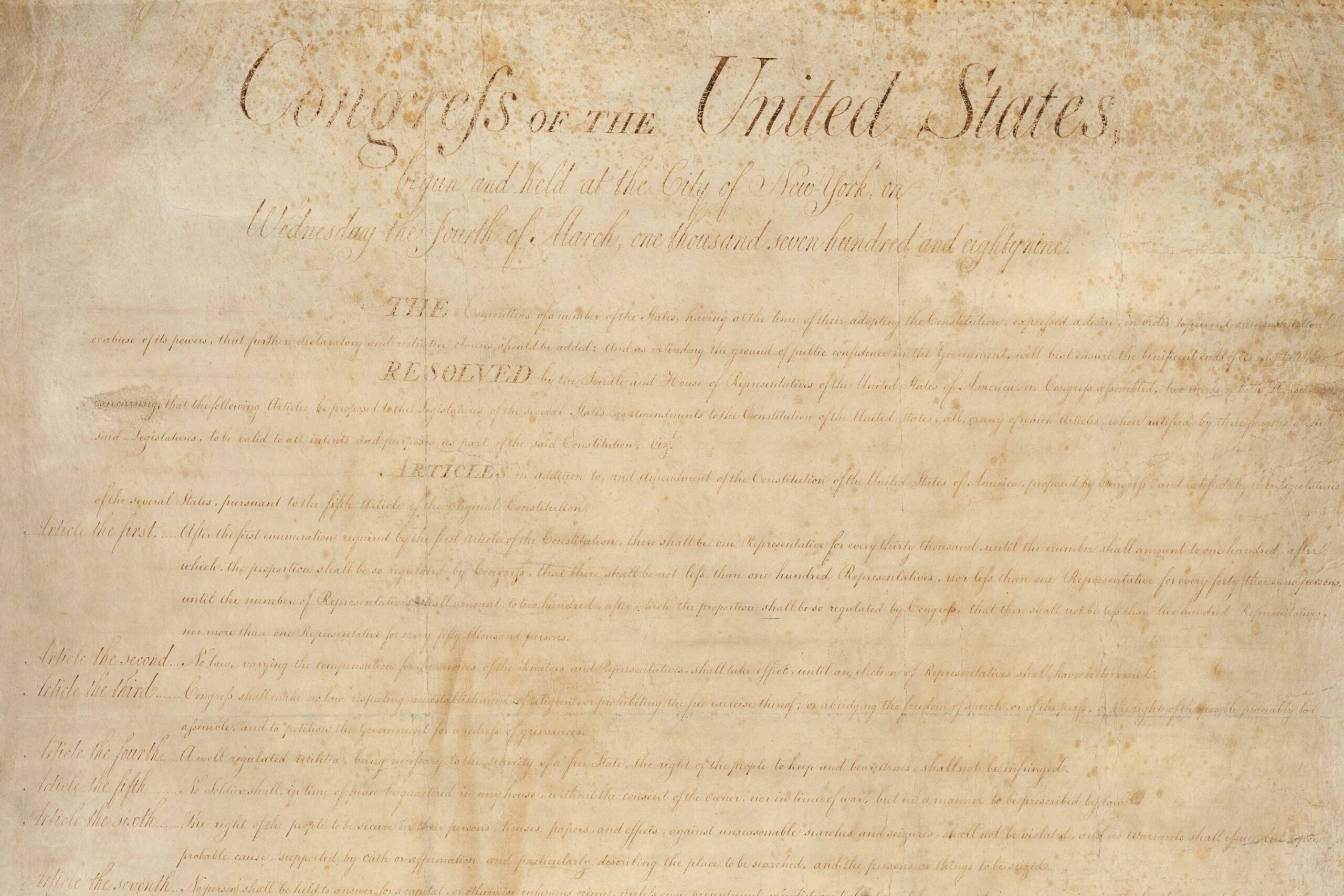Dimension II: The House Select Committee Report

COMMENTARY
On July 21, an 11-member committee one from each state present was finally created by a 34-15 vote to consider Madison’s proposals. These proposals relied heavily on the 20 bill-of-rights proposals that emerged from the Virginia Ratifying Convention with the aim of restraining the reach of the new government. But the Virginia Ratifying Convention also issued 20 amendment proposals that aimed to dismantle the structure and powers of the new government. Both proposals were sent to the Select Committee.
The Committee members were John Vining, James Madison, Robert Baldwin, Roger Sherman, Burke, Richard Gilman, George Clymer, Benson, Goodhue, Boudinot, and Gale. Note that 5 of the 11 signed the Constitution on September 17, 1789. Also note that Elbridge Gerry one of three delegates who did not sign in Philadelphia was not selected to this committee. This particular selection of delegates all Federalists was a potentially pro-Madison committee if he had the talent, and stamina, to lead the members to take his project seriously and provide the context for the admission of North Carolina and Rhode Island to the Union.
Theodore Sedgwick, a Federalist, did not think Madison had the talents to perform this task. Writing to Benjamin Lincoln on July 19, 1789, Sedgwick noted: “Mr. Madison’s talents, respectable as they are will for some time be lost to the public, from his timidity. He is constantly haunted with the ghost of Patrick Henry. No man, in my opinion, in this country has more fair and honorable intentions, or more ardently wishes the prosperity of the public, but unfortunately he has not that strength of nerves which will enable him to set at defiance popular and factious clamors.”
Another Federalist, Fisher Ames of Massachusetts, hoped that the Select Committee mode of doing business will produce amendments that “will be more rational, and less ad populum, than Madison’s.” Senator Robert Morris wrote the following to Francis Hopkinson on August 15, 1789: “Poor Madison got so Cursedly frightened in Virginia, that I believe he has dreamed of amendments ever since. This however is, ad Captandum. [To play the crowd.] Similarly, Noah Webster criticized Madison for taking a narrow view of the principle of representation by placing the wishes of the constituents who elected him over the interests of the nation. Framer Pierce Butler wrote to James Iredell on August 11, 1789: “If you wait for substantial amendments, you will wait longer than I wish you to do, speaking interestedly. A few milk-and-water amendments have been proposed by Mr. Madison, such as liberty of conscience, a free press, and one or two general things already well secured. I suppose it was done to keep his promise with his constituents, to move for alterations; but, if I am not greatly mistaken, he is not hearty in the cause of amendments.”
The Committee, however, made few changes and Madison was reasonably satisfied with the work of this committee. Writing to Wilson Carey Nicholas on August 2, 1789, Madison expressed mostly positive feelings about the work of the Committee: “The proposed amendments of which I sent you a copy have since been in the hands of a committee composed of a member from each State. Their report is enclosed. Some of the changes are perhaps for the better, others for the worse. From the concord of the Committee. and the language used in the House on the last discussion, I indulge a confidence that something will be affected. For the Senate I can less answer, but I have no reason for distrust in case the plan be kept within its present limits.”
On July 28, Vining read the House Select Committee Report. Madison accomplished two objectives as a consequence of this Report. First his own proposal, based heavily on the Virginia Ratifying Bill of Rights recommendation, became the plan to be passed, defeated, or altered (or even mocked by both sides as a waste of time). The various State Ratifying Amendment Proposals and especially the Virginia Ratifying Amendment recommendations were deemed to be too numerous, varied, and radical to be molded into one plan. Second, Madison’s idea of incorporating his various proposals within the original Constitution was accepted.